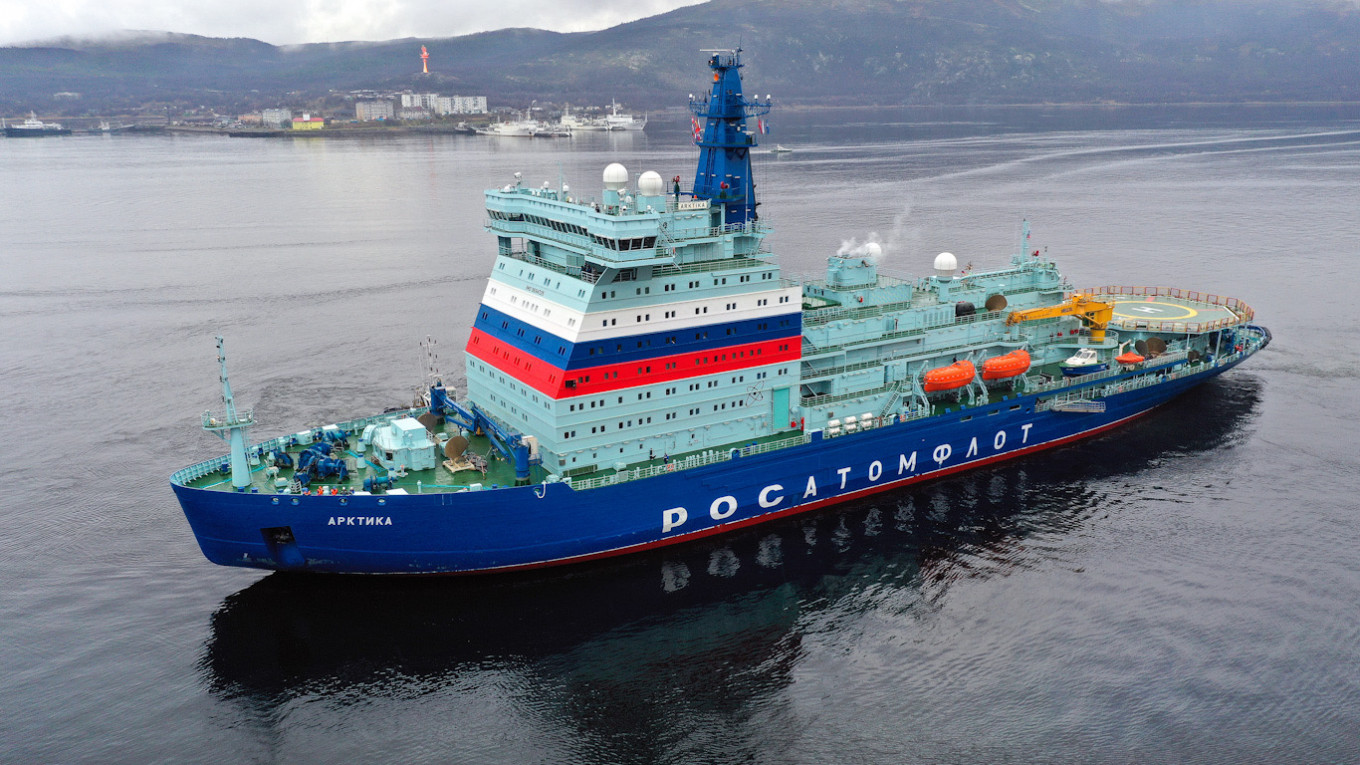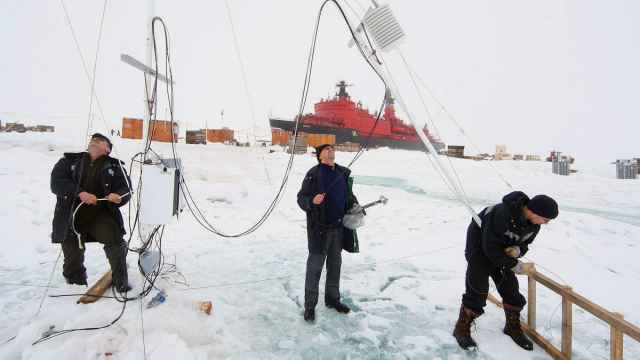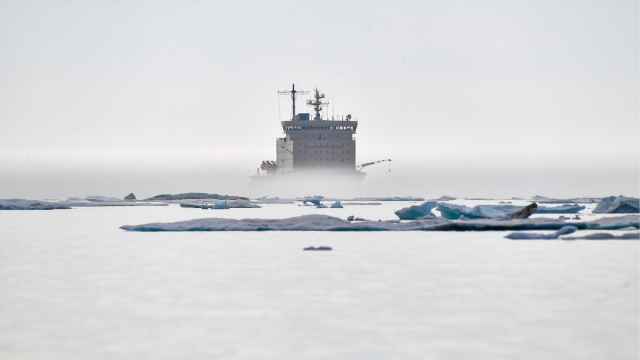Russia’s nuclear-powered Arktika icebreaker will need to undergo a second test voyage to prove its capabilities after Arctic sea ice levels were too thin during its first test run.
After reaching the North Pole on her maiden voyage, state nuclear-powered icebreaker agency Atomflot said the Arktika proved its ability to navigate in ice conditions, adding that the vessel sailed through three-meter-thick ice.
The statement was likely premature. The Arktika testing crew's captain Oleg Shchapin said new ice tests will be needed, the state-run TASS news agency reported Monday.
“Ice tests are still ahead, probably this year, because the current ice tests did not work out; the ice thickness was 1.1 to 1.2 meters. It was thin and loose, the icebreaker experienced no resistance at all,” TASS quoted Shchapin as saying.
“We tried to find a three-meter ice floe, but could not find one,” he added.
Shchapin did not specify where three-meter-thick ice could be found. Currently, the entire Northern Sea Route north of Siberia from the Kara Sea to the Bering Strait is open water. The polar ice cap further north shrank to its second lowest extent in recorded history last month has never been reported weaker and thinner than it was this year.
Multiyear sea ice is currently only found in the waters north of Canada, Alaska and Greenland.
Departing from the Baltic Shipyard in St. Petersburg on Sept. 22, the Arktika sailed straight to the North Pole before heading south and calling to her new homeport of Murmansk on Oct. 12.
The official commissioning of the Arktika took place on Wednesday, Oct. 21, in a ceremony in Murmansk attended by Prime Minister Mikhail Mishustin. The prime minister also signed the icebreaker’s acceptance decree.
In December, the Arktika will begin plowing through ice along the Northern Sea Route. Next summer, however, a new starboard propulsion motor will be installed as the original one short-circuited and stopped working after trial sailings in the Gulf of Finland in February. The Arktika has three similar propulsion motors.
The icebreaker is the first in a series of five nuclear-powered vessels which make up Project 22220.
The four other vessels in the class are named Sibir, Ural, Yakutiya and Chukotka. They are expected to start operations from 2021 to 2027.
All will be based in Murmansk, but mainly operate along the eastern section of the Northern Sea Route.
This story was originally published in The Barents Observer.
A Message from The Moscow Times:
Dear readers,
We are facing unprecedented challenges. Russia's Prosecutor General's Office has designated The Moscow Times as an "undesirable" organization, criminalizing our work and putting our staff at risk of prosecution. This follows our earlier unjust labeling as a "foreign agent."
These actions are direct attempts to silence independent journalism in Russia. The authorities claim our work "discredits the decisions of the Russian leadership." We see things differently: we strive to provide accurate, unbiased reporting on Russia.
We, the journalists of The Moscow Times, refuse to be silenced. But to continue our work, we need your help.
Your support, no matter how small, makes a world of difference. If you can, please support us monthly starting from just $2. It's quick to set up, and every contribution makes a significant impact.
By supporting The Moscow Times, you're defending open, independent journalism in the face of repression. Thank you for standing with us.
Remind me later.






